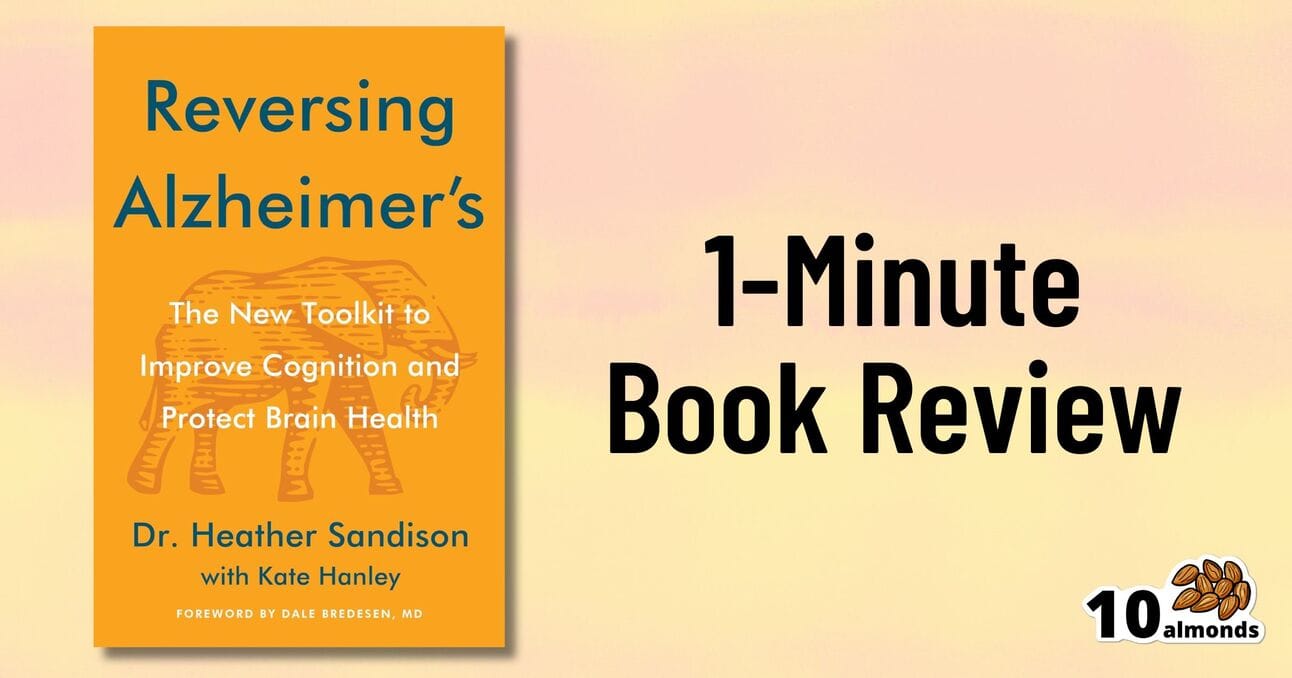❝My mission in life is not merely to survive, but to thrive; and to do so with some passion, some compassion, some humor, and some style❞
In A Rush?
Today’s 30-Second Summary
If you don’t have time to read the whole email today, here are some key takeaways:
It’s easy to overlook serious threats when they’re the ones not often talked-about
Today’s main feature looks at what we can do to reduce our risk of pneumonia—something that’s often not seen coming, since it’s commonly a secondary infection in the wake of some other health problem
Medical and lifestyle interventions are possible, ranging from pneumococcal vaccines to not getting germs in one’s respiratory tract to reducing the risk of one infection opening the door to a secondary infection, and more.
Do you use headphones/earbuds a lot? If so…
Today’s sponsor Status has some latest-tech earbuds you are going to want to try out, to give your ears the best they’ve ever heard.
Today’s featured recipe flips the script on health food, with super-nutritious heart-healthy and gut-friendly kimchi fried rice (do not underestimate it!)
Read on to learn more about these things, or click here to visit our archive
A Word To The Wise
Watch and Learn
7 Minutes, 30 Days, Honest Review: How Does The 7-Minute Workout Stack Up?
Business Insider’s Kelly Reilly is not a health guru, and here he reviews the 7-minute workout for us, so that we can get a real view of what it’s really like in the real world, outside of the lab:
Prefer text? The above video will take you to a 10almonds page with a text-overview, as well as the video!
Wildcard Wednesday
Pneumonia: What We Can & Can’t Do About It
Pneumonia is a significant killer of persons over the age of 65, with the risk increasing with age after that, rising very sharply around the age of 85:
While pneumonia is treatable, especially in young healthy adults, the risks get more severe in the older age brackets, and it’s often the case that someone goes into hospital with one thing, then develops pneumonia, which the person was already not in good physical shape to fight, because of whatever hospitalized them in the first place:
Other risk factors besides age
There are a lot of things that can increase our risk factor for pneumonia; they mainly fall into the following categories:
Autoimmune diseases
Other diseases of the immune system (e.g. HIV)
Medication-mediated immunosuppression (e.g. after an organ transplant)
Chronic lung diseases (e.g. asthma, COPD, Long Covid, emphysema, etc)
Other serious health conditions ← we know this one’s broad, but it encompasses such things as diabetes, heart disease, and cancer
See also:
Things we can do about it
When it comes to risks, we can’t do much about our age and some of the other above factors, but there are other things we can do to reduce our risk, including:
Get vaccinated against pneumonia if you are over 65 and/or have one of the aforementioned risk factors. This is not perfect (it only reduces the risk for certain kinds of infection) and may not be advisable for everyone (like most vaccines, it can put the body through its paces a bit after taking it), so speak with your own doctor about this, of course.
See also: Vaccine Mythbusting
Avoid contagion. While pneumonia itself is not spread person-to-person, it is caused by bacteria or viruses (there are numerous kinds) that are opportunistic and often become a secondary infection when the immune system is already busy with the first one. So, if possible avoid being in confined spaces with many people, and do wash your hands regularly (as a lot of germs are transferred that way and can get into the respiratory tract because you touched your face or such).
See also: The Truth About Handwashing
If you have a cold, or flu, or other respiratory infection, take it seriously, rest well, drink fluids, get good immune-boosting nutrients. There’s no such thing as “just a cold”; not anymore.
Look after your general health too—health doesn’t exist in a vacuum, and nor does disease. Every part of us affects every other part of us, so anything that can be in good order, you want to be in good order.
This last one, by the way? It’s an important reminder that while some diseases (such as some of the respiratory infections that can precede pneumonia) are seasonal, good health isn’t.
We need to take care of our health as best we can every day along the way, because we never know when something could change.
Want to do more?
Check out: Seven Things To Do For Good Lung Health!
Take care!
Our Sponsors Make This Publication Possible
Escape into a World of Crystal-Clear Sound with Status Audio's Between 3ANC Earbuds
These are not your ordinary earbuds. They’re your gateway to portable audio so immersive you'll feel the music coursing through your veins — wherever you choose to listen.
Why gamble on your sound experience when you can guarantee bliss with the OG three-speaker wireless earbuds? It's a promise of unparalleled clarity and depth, all within a price that keeps your wallet at ease.
Crafted for the Connoisseur. Status Audio’s award-winning triple-driver acoustic system completely changed the game. Three speakers in each ear harmonize to deliver depth, clarity, and emotion in every note. Whether you're powering through a workout or lost in the storyline of your favorite podcast, the Between 3ANC transforms sound into a three-dimensional experience.
Your Soundtrack, Elevated. Status believes great sound shouldn't be a luxury. It's a necessity for those who crave the thrill of a bass drop, the drama in a poignant podcast, or the vibes from a live concert recording. With the Between 3ANC, you don't just listen; you live your audio.
Bonus: Status is offering an exclusive $20 discount. Just for you. Use at checkout and step into the world of elite sound without the elite price tag. Don't Just Hear. Feel. Your search ends here. The Between 3ANC Earbuds aren't just the best choice—they're the only choice for those who demand more from their music.
Please do visit our sponsors—they help keep 10almonds free
You May Have Missed
Holding Back The Clock on Aging
Eat to Your Heart’s Content (book)
Osteoporosis Exercises
This Or That?
Vote on Which is Healthier
Yesterday we asked you to choose between rice and buckwheat—we picked the buckwheat (click here to read about why), as did 86% of you!
Now for today’s choice:
Click on whichever you think is better for you!
Recipes Worth Sharing
Kimchi Fried Rice
Fried rice is not something that leaps to many people’s minds when one says “health food”. But it can be! Today’s recipe is great for many aspects of health, but especially the gut, because of its star ingredient, the kimchi. But there’s a lot more going on here too:
Click below for our full recipe, and learn this versatile dish:
You (Also) May Have Missed
The Many Health Benefits of Garlic
The Bare-bones Truth About Osteoporosis
Vit D + Calcium: Too Much Of A Good Thing?
One-Minute Book Review
Reversing Alzheimer's: The New Toolkit to Improve Cognition and Protect Brain Health – by Dr. Heather Sandison
The title here is bold, isn’t it? But, if the studies so far are anything to go by, she is, indeed, reversing Alzheimer’s. By this we mean: her Alzheimer’s patients have enjoyed a measurable reversal of the symptoms of cognitive decline (this is not something that usually happens).
The science here is actually new, and/but references are given aplenty, including Dr. Sandison’s own studies and others—there’s a bibliography of several hundred papers, which we love to see.
Dr. Sandison’s approach is of course multivector, but is far more lifestyle medicine than pills, with diet in particular playing a critical role. She has found best results in a diet low in carbs, high in healthy fats—and it bears emphasizing, healthy ones. Many other factors are also built in, but this is a book review, not a book summary.
Nor does the book look at diet in isolation; other aspects of lifestyle are also taken into account, as well as various medical pathways, and how to draw up a personalized plan to deal with those.
The book is written with the general assumption that the reader is someone with increased Alzheimer’s risk wishing to reduce that risk, or the relative of someone with Alzheimer’s disease already. However, the information within is beneficial to all.
The style is on the hard end of pop-science; it’s written for the lay reader, but will (appropriately enough) require active engagement to read effectively.
Bottom line: if Alzheimer’s is something that affects or is likely to affect you (directly, or per a loved one), then this is a very good book to have read
Penny For Your Thoughts?
What did you think of today's newsletter?
Wishing you a healthy day today and every day,
The 10almonds Team









